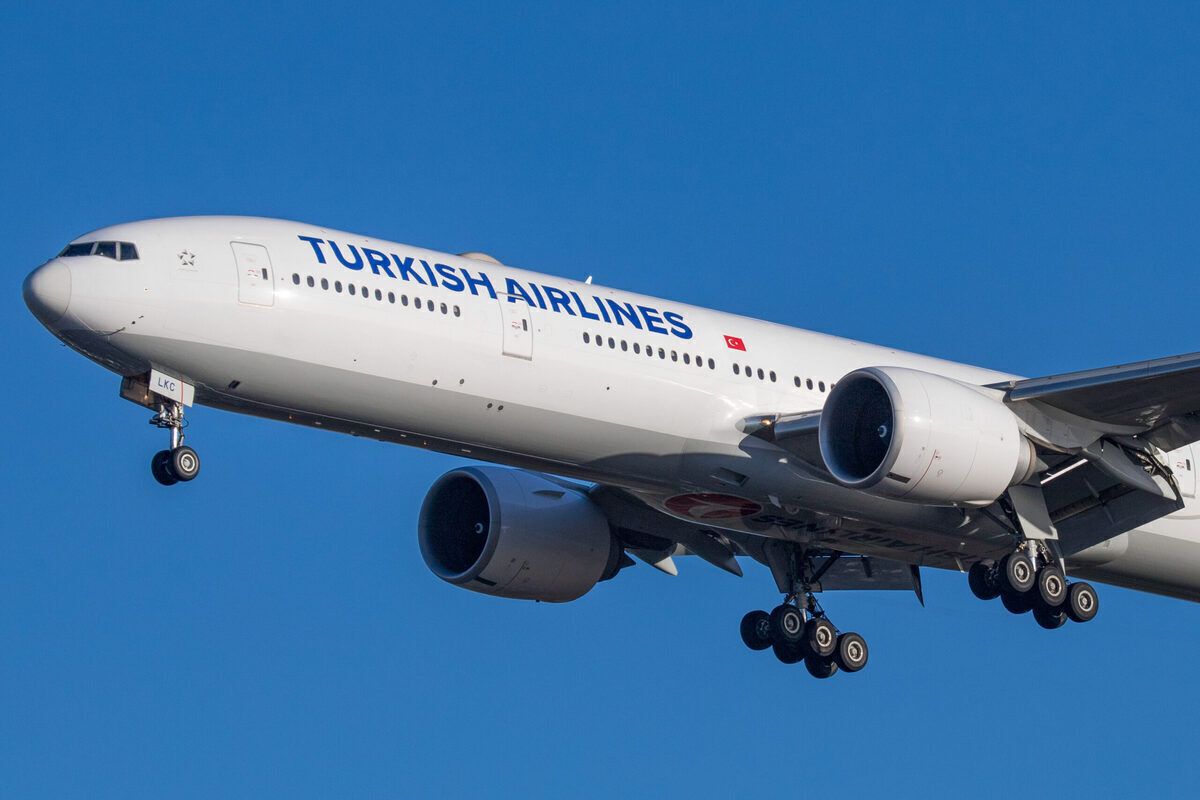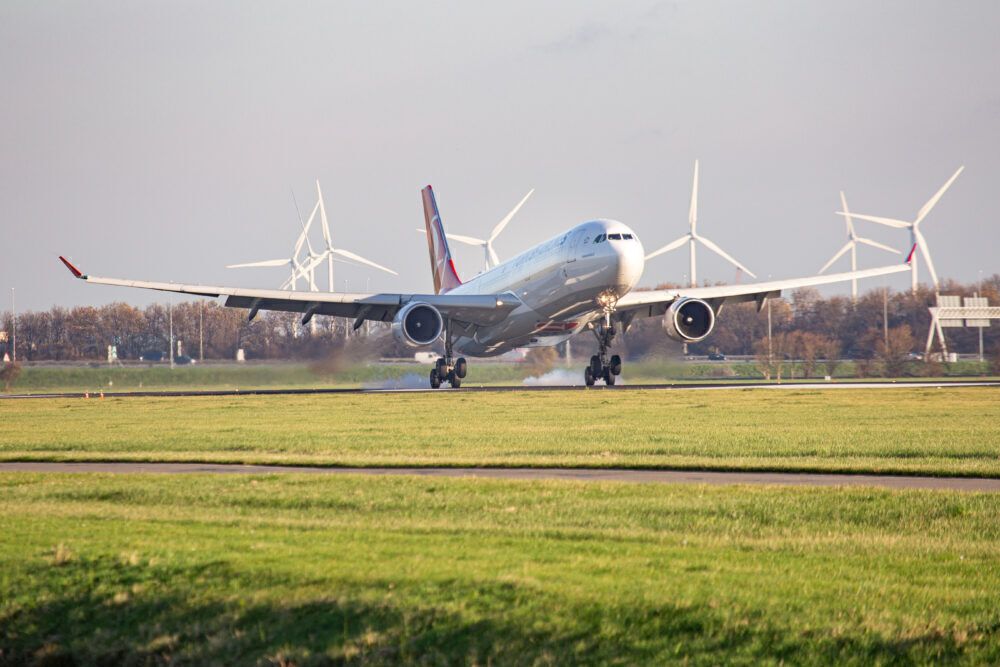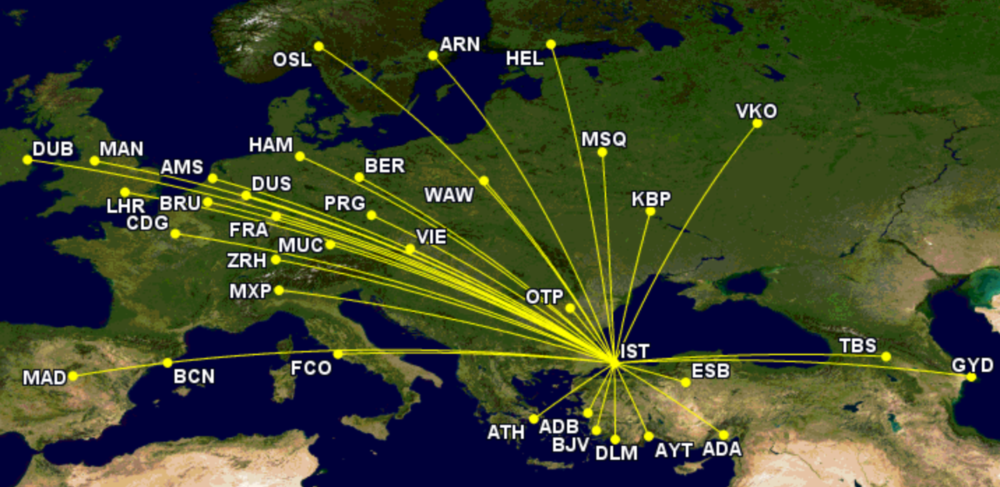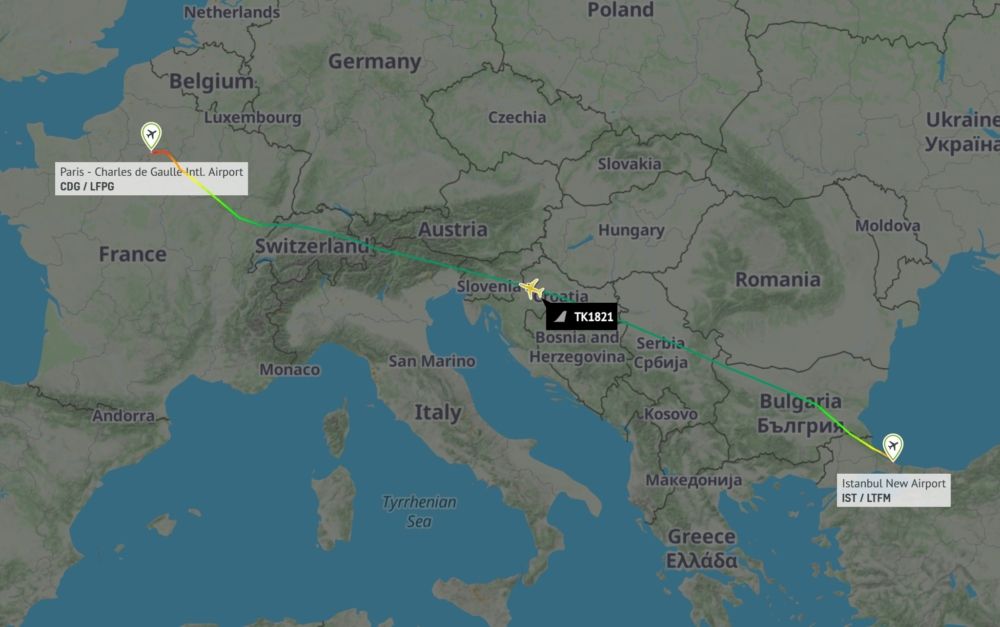Turkish Airlines is well known for operating widebodies from its Istanbul Airport hub to destinations across Europe, together with domestically and to the Caucasus. And it is still going strong, with 35 destinations served and 234 weekly departures in the week beginning September 20th. Five widebodies are used, with the A330-300 by far the number-one.
What's the situation?
Turkish Airlines' use of twin-aisle aircraft on comparatively short sectors is driven by high demand at particular times of the day (especially from those connecting over Istanbul) and because European flights normally fit in-between long-haul operations.
The largest number of inbound widebody arrivals at Istanbul is 05:00 to 06:00, with these mainly from Asia and Africa, North America, and the Middle East. This enormous volume of inbound passengers means that widebody aircraft then depart to particular European destinations.
35 widebody routes across Europe
Some 35 destinations in Europe, Turkey, and the Caucasus will see Turkish Airlines' widebodies in the week starting September 20th. That's based on the latest schedules information submitted by the carrier to OAG.
There are 29 international destinations and six domestic. Between them, they have 234 outbound departures or around 33 a day. That is pretty decent, especially during a pandemic. However, it is only 61% of what the Star Alliance member had in the same week in 2019. In contrast, all of Turkish Airlines flights to these areas are at 81%, showing that the recovery is, as you'd expect, less about widebodies.
Where do its widebodies fly?
The 321-mile link from Istanbul to Antalya, the ever-popular resort area, has the most widebody service, with 15 weekly flights and a block time of just over one hour. The specific flights they will operate fit nicely with connecting flights from elsewhere.
From Istanbul, they tend to be deployed on the 08:40 departure (fed by lots of arrivals globally), arriving back to feed Europe and North America services and more. Another departure at 18:40 captures plenty of traffic from Europe. The latter is crucial as it arrives back in Istanbul at 22:45, feeding many outbound flights worldwide.
Stay aware: Sign up for my weekly new routes newsletter.
Eight destinations are on the twin-aisle rota that did not see widebodies during the same week in 2019 – Baku, Bodrum, Brussels, Dublin, Helsinki, Minsk, Oslo, and Prague. However, there have been five cuts: Copenhagen, Geneva, Kayseri, Trabzon, and Venice. None of these will welcome twin-aisles in this particular week or for the rest of the year.
|
Istanbul Airport to… |
Outbound flights (week of September 20th) |
|---|
Some perspective is needed
Antalya being first (but only by one departure) needs to be put into perspective. Turkish Airlines has 98 weekly departures on this airport-pair, so widebodies are a fairly small proportion (15%). This is very different for other routes, including Heathrow (100% by widebodies in the week), Dublin (70%), Bucharest (79%), Manchester (67%), Berlin (67%), and more.
Of course, not many destinations are at the level they were previously, but some are or very close to it. For example, Vienna and Moscow Vnukovo remain seven-weekly each, while others are close, including Kyiv Boryspil (15 and now 14) and Bucharest (14 and now 11).
The A330-300 is the number-one widebody
With over half of outbound flights, the 289-seat A330-300 plays an important role across Europe, Turkey, and the Caucasus. This isn't too surprising as it has more of this variant than any other type. More than this, almost half of the variant's total flights are to these areas, about the same as before the pandemic despite widespread restrictions.
- A330-300: 125 outbound flights in the week beginning September 20th
- B777-300ER: 47
- B787-9: 32
- A330-200: 23
- A350-900: 7 (one only destination: Paris CDG)
What are your experiences of flying Turkish Airlines' twin-aisles? Let us know in the comments.




